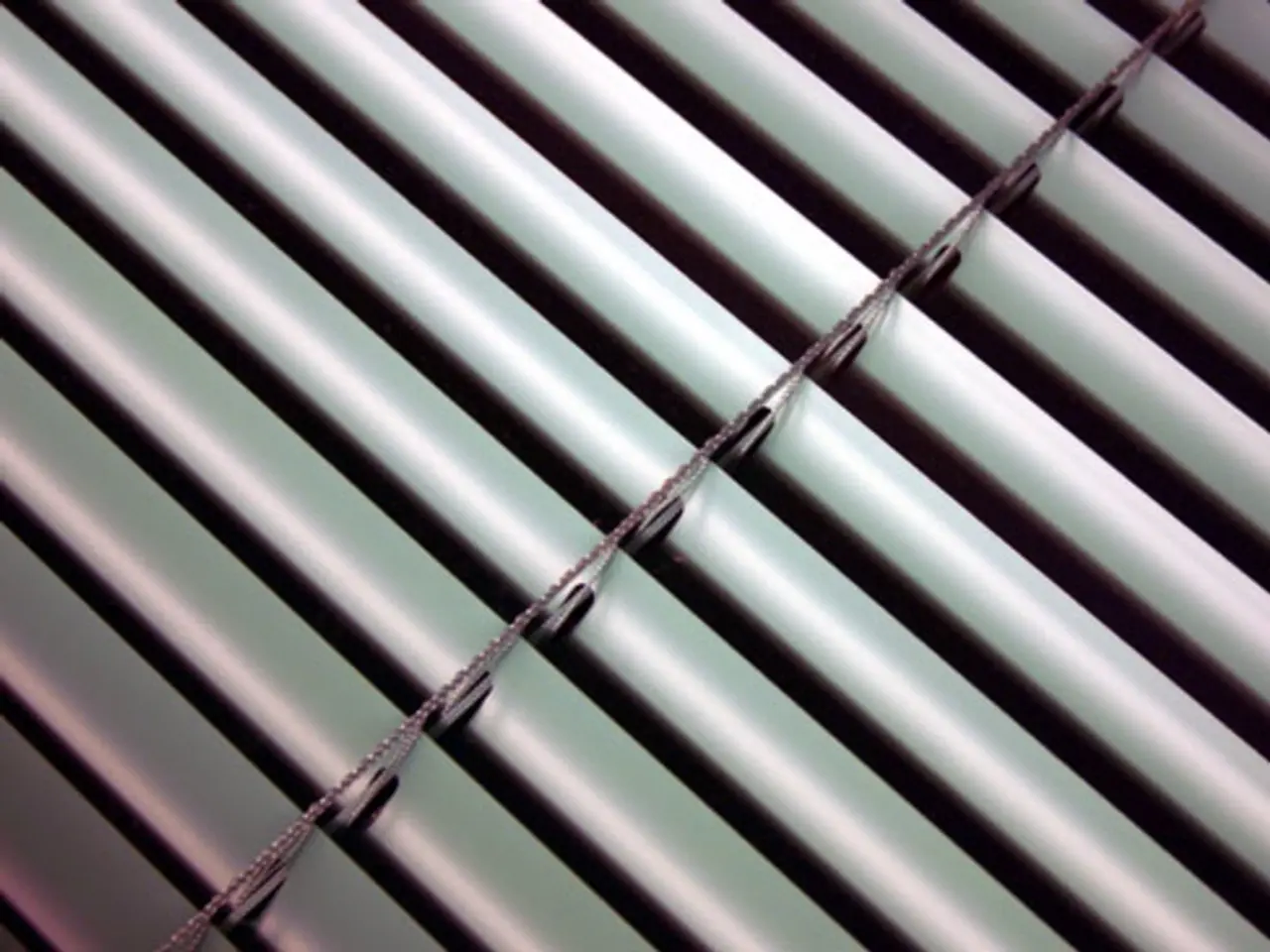Options for Designing a Retail Store Architecture
In the world of retail store development, the choice of windows plays a crucial role in both aesthetics and functionality. Closed windows, with their solid walls behind the glass, offer privacy while effectively showcasing products [1]. Semi-closed windows, featuring half of the window exposed, strike a balance between visibility and privacy [1]. Higher-level windows, installed on upper floors, enhance a store's elevation and overall appearance [2].
Consulting a commercial general contractor is essential in helping select the right window options that suit a store's aesthetic and functional needs [3]. For energy efficiency, the recommended glass types include dual or triple-pane Insulated Glass Units (IGUs) filled with inert gases like argon or krypton to reduce heat transfer [4]. These should have low-emissivity (Low-E) coatings to reflect infrared light, thereby improving thermal performance by reflecting interior heat during winter and blocking solar heat during summer [4].
Laminated, tempered, and tinted glass options add ultraviolet protection and enhance safety by improving impact resistance [4]. Warm edge spacers are advised to reduce condensation and heat loss along the glass edges, further improving insulation [4]. Safety and security window films can enhance impact resistance, provide UV protection, and improve energy efficiency by reducing solar heat gain and heat loss [2].
To complement the glass, window frames with thermal breaks (especially aluminum frames) help minimize heat conduction [1]. Proper installation with effective weatherstripping, multi-point locking systems, flashing integration, drainage channels, and sloped sills is critical to prevent air and water infiltration, maintain structural integrity, and maximize overall energy performance [1].
Island windows, positioned as stand-alone windows often used in storefronts, capture attention [1]. Corner windows, positioned at the corners of a store, provide visibility from multiple angles [1]. Open-back windows facilitate a smooth transition between a store's interior and exterior [1]. Heat-soaked tempered glass, able to withstand high temperatures, is commonly found in retail environments with heat exposure [5].
Insulated glazing, perfect for windows with multiple panes, lowers the U-factor and Solar Heat Gain Coefficient (SHGC), enhancing insulation properties [6]. Fully tempered glass, among the most secure options for retail spaces, offers four times the strength compared to annealed glass [7]. Reflective coatings help block glare and control internal heat, keeping the store comfortable while protecting products [8]. Heat-absorbing tints can reduce solar radiation passing through the glass, reducing glare while preserving the visual appeal of the storefront [8].
Annealed glass, available in sheets, offers durability but lacks safety features; it may be recommended for areas where safety is not a primary concern [9]. Shadow boxes are used to highlight smaller items and add visual interest to a storefront [10]. Wire glass, a fire-resistant option, is suitable for locations where fire protection is essential [11].
In summary, an energy-efficient and safe commercial retail window system typically combines:
- Dual or triple-pane IGUs with argon/krypton gas fill
- Low-E coatings tailored for climate and orientation
- Laminated and tempered glass for safety and UV protection
- Warm edge spacers to reduce edge heat loss and condensation
- Security and energy-efficient window films
- Thermal break frames and secure, weatherproof installation techniques [1][2][3][4]
By carefully considering these factors, retail store developers can create windows that not only showcase their products effectively but also contribute to a comfortable, energy-efficient, and safe environment for customers and employees.
References: [1] Building Green. (n.d.). Retail Store Windows: Energy Efficiency and Safety Considerations. Retrieved from https://www.buildinggreen.com/blog/retail-store-windows-energy-efficiency-and-safety-considerations [2] Energy Star. (n.d.). Window Film. Retrieved from https://www.energystar.gov/products/windows_doors_skylights/window_film [3] National Fenestration Rating Council. (n.d.). NFRC 100: Fenestration Label. Retrieved from https://www.nfrc.org/programs/nfrc-100-fenestration-label [4] U.S. Department of Energy. (n.d.). Energy Efficiency and Productivity in Retail Buildings. Retrieved from https://www.energy.gov/eere/buildings/articles/energy-efficiency-and-productivity-retail-buildings [5] The Glass Guide. (n.d.). Tempered Glass. Retrieved from https://www.theglassguide.com/encyclopedia/tempered-glass/ [6] Insulated Glass. (n.d.). Insulated Glass. Retrieved from https://www.insulatedglass.com/ [7] The Balance Small Business. (n.d.). Tempered Glass vs. Annealed Glass: What's the Difference? Retrieved from https://www.thebalancesmb.com/tempered-glass-vs-annealed-glass-whats-the-difference-3595587 [8] The Glass Detective. (n.d.). Solar Control Low-E Glass. Retrieved from https://www.theglassdetective.com/solar_control_low-e_glass.html [9] The Glass Detective. (n.d.). Annealed Glass. Retrieved from https://www.theglassdetective.com/annealed_glass.html [10] The Glass Detective. (n.d.). Shadow Boxes. Retrieved from https://www.theglassdetective.com/shadow_boxes.html [11] The Glass Detective. (n.d.). Wire Glass. Retrieved from https://www.theglassdetective.com/wire_glass.html
- In the realm of commercial construction, smart-home-devices and gadgets could significantly influence the future of retail, as they align with the changing lifestyle and home-and-garden trends.
- The manufacturing industry is expected to play a pivotal role in creating efficient and eco-friendly smart-home devices, fostering sustainable living.
- The finance sector, meanwhile, will be vital in funding these innovative projects, driving growth in both technology and retail sectors.
- The integration of these smart devices in retail stores can offer a more personalized shopping experience, while also promoting energy efficiency, which aligns with current industry standards.
- As more consumers embrace the concept of smart homes, the retail industry must adapt to this evolution, incorporating these devices as part of their overall strategy to remain competitive and meet the demands of modern lifestyle.




